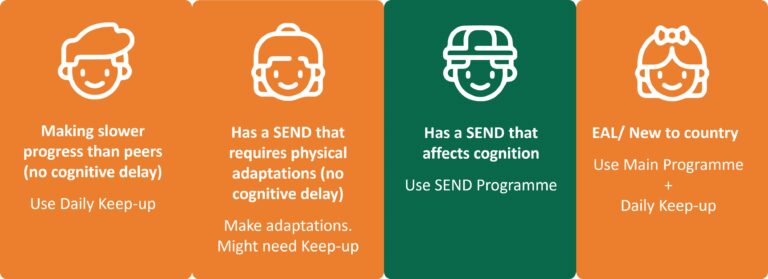Before books, all knowledge and storytelling was passed on verbally with those that heard the story or learned how to hunt, retelling or recounting it to others, days, weeks, months or even years later.
Recounting accurately relies on two main skills – listening and remembering and a supplementary one in structuring the recount to include the details in order.
In the following activities, pupils will practise these skills and become expert at recounting.
Suitable for: Year 2 to Year 6
Learning Focus: Be able to listen accurately and effectively
Develop skills to aid memory
Be able to recall facts and structure them in order
Activity One:
Pupils of all ages will know many stories, even if they’re only fairy tales. In this activity, ask the pupils to recount a story that they know.
You are likely to find the story will be told out of sequence as the pupils remember additional facts and that some of the facts will be missing. You may also find that some elements of other stories may creep into the recount.
Ask the other pupils to comment on the recount, adding any detail they can remember. How close is the final recount to the original story?
Activity Two:
In this second activity, you need to read a short, unfamiliar story to the pupils without telling them that they will have to recount it. Suggestions might include Rikki Tikki Tavi from The Jungle Book or The City Mouse and the Country Mouse. The next day ask them to write the story down. Once the pupils have finished, ask them to tell you what they included in their story and list them on the board. Once you’ve got a definitive list, ask them to check off those that they used.
Ask them to say how they remembered the facts from the story and what strategies did they use for the recount of the story.
Activity Three:
The third activity allows the pupils to observe an event and then recall the details at a later date. Instead of relying on listening skills, this activity relies on observational skills.
Ask another adult to come into the class whilst you’re teaching and take a picture off the wall, add another picture, pick up some items, look out of the window, move an object to a different location, say something to you or a pupil and anything else that you think is appropriate.
The next day remind them of the person’s visit to the classroom and ask them to say what the person did. Do the activity as a whole class as you will find that the observations of one pupil will act as a prompt for others whilst other pupils will refine what has been mentioned already.
Ask the pupils what it was that helped them to recall their facts and you should be able to build up a guide to remembering and recounting.


